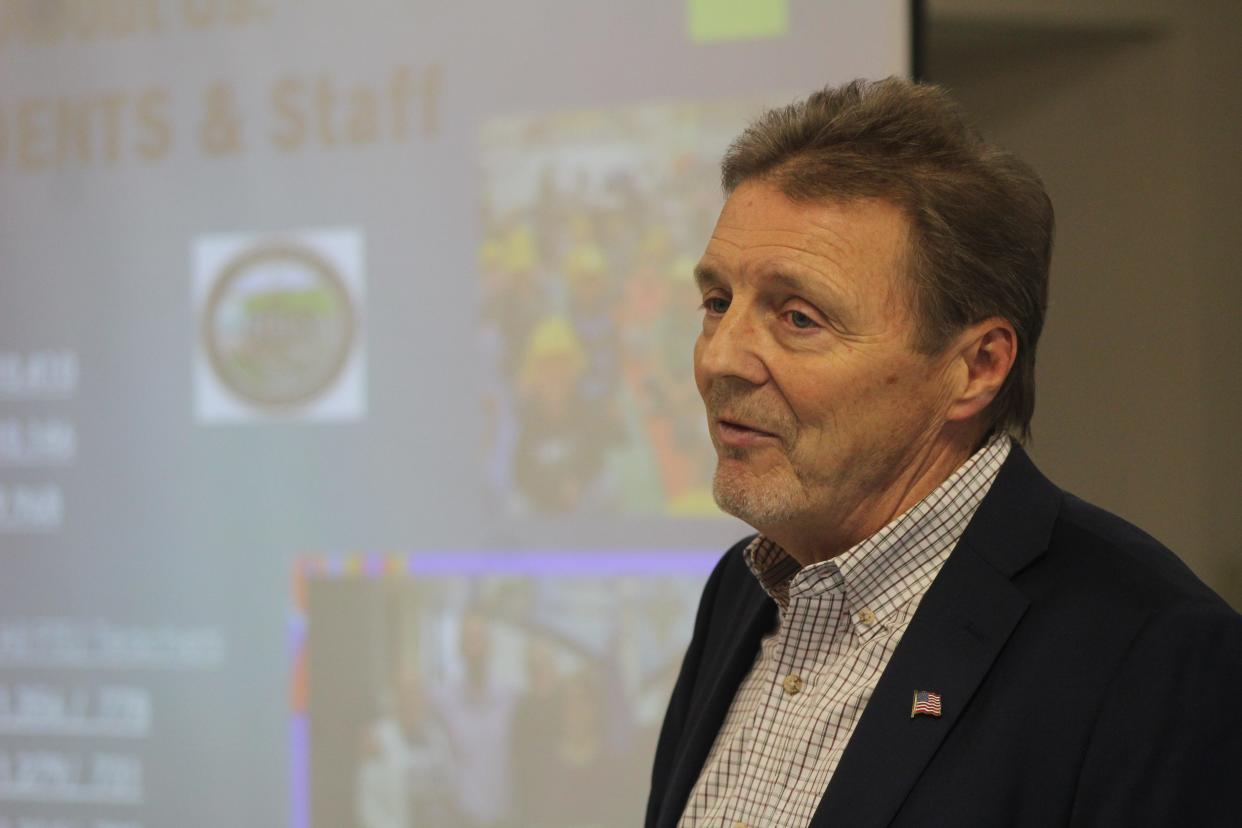Great Falls Public Schools facing financial cliff as COVID subsidies end
For the past four years the Great Falls Public Schools District has been the beneficiary of substantial federal subsidies, monies that were allocated by Congress to help schools across the country address the adverse impacts of the COVID pandemic. Those federal subsidies are at an end.
On May 8, Great Falls Public Schools Superintendent Tom Moore addressed a community gathering to explain the financial challenges the district is soon facing.
“The bottom line here is that these monies are done,” Moore said. “Funding ends May 15 and we have to report by the end of August to OPI (Montana Office of Public Instruction) that these funds have been fully expended.”

Across Montana school districts are bracing for a funding shortfall that threatens to force teacher and support staff layoffs and the cutbacks in student services. According to Moore, who retires at the end of the school year, over the past four years Great Falls Public Schools has received close to $38.7 million in federal funding related to COVID. Much of that money was used to offset general fund expenditures, temporarily setting aside the need to ask local taxpayers to approve additional school tax levies.
Great Falls Public Schools was the only Montana AA district that did not request an increase in the school mill levy in 2024. More than half of the 17 other school mill levy proposals failed on May 6, including all five funding requests in Helena and a $60.5 million construction bond request to build a new elementary school in Belgrade.
Great Falls can count itself fortunate in having been able to dodge some of the financial hardships other Montana school districts are currently facing, but demographics and the unique composite of the community are bringing challenges that cannot be avoided. Chief among these is a declining enrollment within Great Falls Public Schools.
“Our current enrollment of 9,968 students is on a declining trend and it has been for a number of years,” Moore said. “If you go back to 2008 when I first arrived here, we were at about 10,410 students.”
“We were hoping that with the exodus from some of the large cities coming to Montana we’d see more children in our schools,” he added. “That’s not been the case. A lot of the folks who immigrated into Great Falls were not bringing children with them and were not of childbearing ages. We’ve seen some uptick in our overall population in Great Falls and in Cascade County, but not in the school age population.”
Enrollments are critical to school funding in Montana because they are the benchmark the state uses to allocate financial resources. Student numbers are the main factor in determining overall school funding.
A 1989 lawsuit forced the state legislature to dramatically change Montana’s school funding system. At the time, there was a significant difference in per student spending between schools depending mainly on the property wealth of local communities. The settlement required the legislature to create a more equitable funding system for all Montana students.
The solution the state legislature came up with was to dictate that all schools expend the same amount of money for every student. Lawmakers agreed to create a formula that calculated the Average Cost Per Student. The cost was different between elementary education and high school because the cost of providing a high school education was greater per student. As of 2023 Montana pays an average of $13,347 each year to educate its students.
However, individual voting districts have the option to expand upon that amount. This average Cost Per Student determines the maximum budget for every school, a figure that is referred to as ‘the cap’. A Montana school district cannot spend more than the cap. Schools are required to spend at least 80% of the cap, a figure that is referred to as the ‘base budget,’ but it is up to each community individually to decide if they want to spend any or all of the 20% above the base budget that is allowed.
For this 20% the community must vote to tax itself with a local mill levy. When a community votes on a local mill levy, they’re deciding how much of this 20% part of the cap they want to contribute. As costs go up the cap goes up too.
In Great Falls it may seem like school levies come up all the time, but in fact that’s exactly how the school funding formula was designed. Each time the cap goes up voters are asked to decide how much of the 20% of local funding voters want to spend. If voters do not support local levies than school district funding falls below the cap. Great Falls voters have only approved four levies in the past 14 years meaning school funding has consistently fallen behind the Cost Per Student Cap.
Leaders among many of Montana’s larger school district point to an outdated formula used by the state legislature as a contributing factor to the state’s school funding woes. The legislature has consistently adhered to a 3% inflationary increase in school funding, a number that has failed to keep pace with inflationary rates which have exceeded 5.5% over the past three years.
“The school funding formula needs some serious work,” Moore said. “The burden on local taxpayers constantly using property taxes to fund our schools is not working, not just here in Great Falls but in a lot of our communities across the state.”
Administrators across Montana suggest lawmakers need to increase the inflationary adjustments to avert an immediate inflationary crisis, but the next legislative session is still seven months away and school districts are already scrambling to adjust heading into September when classes resume.
This article originally appeared on Great Falls Tribune: Great Falls schools warning of pending budget shortfall
